Unfortunately, Colorado is one of the most wasteful states in the USA. For example, the Centennial State created a record 9,307,000 tons of waste in 2018. However, its recycling rate was only 12%. So, to put this into perspective, the USA’s average recycling rate is 35%. On average, residents in Colorado throw away almost eight pounds of trash daily. But where does all this waste go? The largest landfill in Colorado is the Denver Arapahoe Disposal Site, and this is where a lot of the state’s trash lands.
The Largest Landfill In Colorado
The largest landfill in Colorado covers 2364 acres of land. However, only 1363 acres are utilized for disposal. Denver Arapahoe Disposal Site processes around 2.1 million tons of trash annually. The landfill accepts the following:
- Asbestos
- Municipal solid waste
- Oil exploration and production waste
- Non-hazardous industrial waste
- Construction and demolition debris
- Yard waste
Furthermore, the landfill has 211 gas collection wells and therefore powers 25,000 homes annually in Colorado. Please note that this landfill is a disposal facility for non-hazardous waste. The County and city of Denver owns Denver Arapahoe, and Waste Management operates it. Additionally, it provides disposal solutions for industrial, commercial, and residential clients in Front Range surrounding communities and the Metro Denver area.
It also offers single-stream recycling at no cost and recycling various items like tires, appliances, and electronic waste. However, these items are only accepted for an additional charge. Denver Arapahoe also offers clients the opportunity to purchase compost and mulch products. Lastly, but most importantly, this landfill does not accept hazardous or liquid waste.
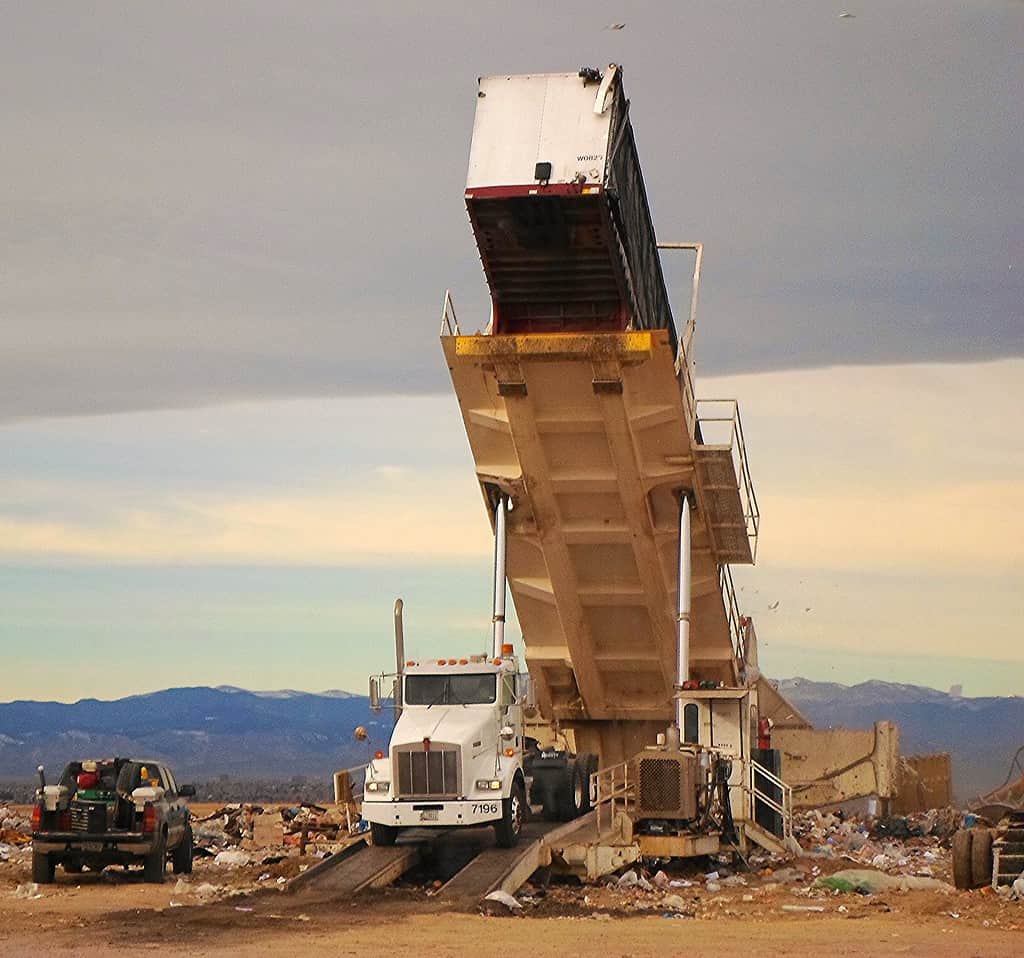
The largest landfill in Colorado covers 2364 acres of land. However, only 1363 acres are utilized for disposal. Denver Arapahoe Disposal Site processes around 2.1 million tons of trash annually.
©Eric Lumsden / CC BY-ND 2.0 – License
Denver Arapahoe Landfill Accepts
- Yard waste
- Oil exploration and production waste
- Asbestos
- Friable or Non-friable auto shredder residue biosolids CERCLA non-hazardous waste
- Municipal solid waste
- Construction and demolition debris non-hazardous industrial and special wastes
Unacceptable Material
- Used oil universal waste
- Regulated hazardous waste
- Bulk liquids CESQG waste
- Lead acid batteries
- Electronic waste
- Liquid materials PCBs equal to or more than 50 ppm or prohibited under TSCA from Subtitle D landfill disposal.
- Untreated medical waste
- Radioactive waste, except for certain NORM wastes
Recycling Center
The recycling center accepts:
- Scarp metal
- White goods
- Electronic waste
- Whole tires
- Food waste
- Wood
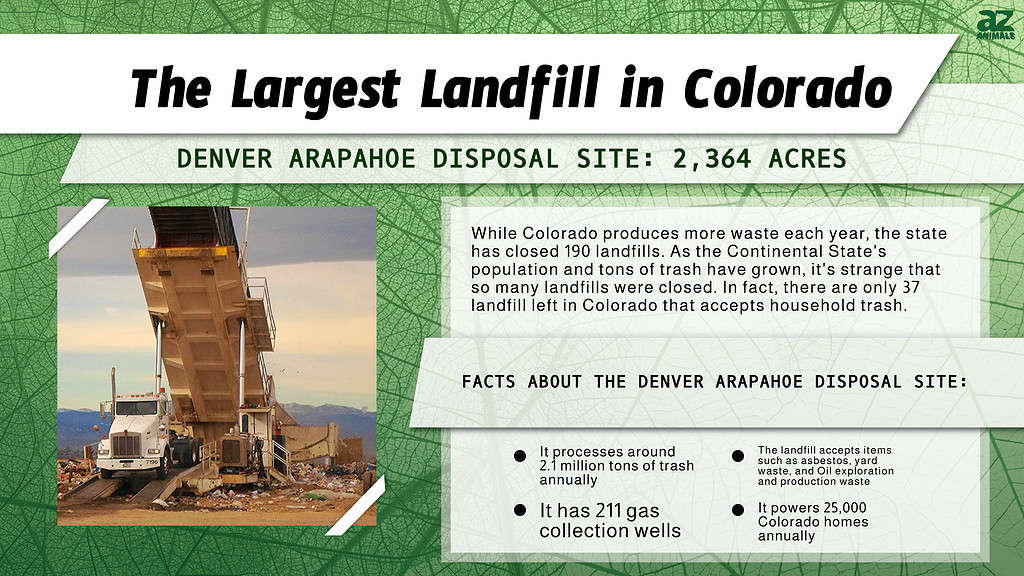
How Many Landfills Are In Colorado?
While Colorado produces more waste each year, the state has closed 190 landfills. As the Continental State’s population and tons of trash have grown, it’s strange that so many landfills were closed. In fact, there are only 37 landfill left in Colorado that accepts household trash. However, it’s a lot more than numerous East Coast states that only have landfill numbers in the single digits.
What Risks Does this Landfill Present to Colorado?
Landfills have been our solution to the proper disposal of solid waste. They have effectively reduced the amount of trash that makes it into the environment, kept communities clean, and prevented disease transmission. However, they also have negative environmental and social impacts. While they may seem necessary, many communities are using other methods to reduce waste that doesn’t significantly affect the biosphere.
A Landfill’s Environmental Impact
- When creating a landfill, it typically means that we are destroying animals’ natural habitat. For example, the average size of a landfill in the U.S. is around 600 acres. The United States has over 3,000 active landfills. Therefore, as much as 1,800,000 acres of habitat were destroyed.
- One of the most worrying concerns regarding landfills is they release methane gas. When the organic mass in landfills begins to decompose, they release methane gas. But why should people worry? Methane gas is more effective at absorbing heat from the sun, more so than carbon dioxide. As a result, it is one of the most severe greenhouse gases and a major factor in climate change.
- Methane is not the only gas that landfills release. They also produce carbon dioxide, water vapor, and trace amounts of nitrogen, oxygen, hydrogen, and non-methane organic compounds. If not managed properly, these gases create smog and contribute to climate change.
- According to federal regulation, landfills in the USA are required to have clay or plastic lining. However, they tend to leak, which results in leachate (liquid from landfill sites) contaminating the water and damaging surrounding habitats.
- Leachate also consists of high levels of ammonia. If ammonia finds its way into ecosystems, it begins to produce nitrate. As a result, water lacks oxygen due to the increased growth of plant life, called eutrophication. This process creates dead zones where wildlife cannot survive caused by lack of oxygen. Leachate also consists of toxins like mercury, thanks to the presence of hazardous objects in landfills.
A Landfill’s Social Impact
- Big landfills usually decrease the value of property adjacent to it by 12.9%. While smaller landfills reduce the land value around them by approximately 2.5%.
- Gases from landfills seriously threaten the health of employees and those who live in the area. In fact, a New York study found a 12% increased risk of children born close to a hazardous landfill experiencing congenital malformations.
- Low-income and minority areas are more likely to be within close distance of hazardous waste sites and landfills. Additionally, these areas have fewer resources to fight these facilities’ placement. Therefore, they are easier targets than people who live in high-income areas.
- Landfills also produce smoke, odor, water supply contamination, bugs, and noise.
Avoiding Landfills
- Avoid single-use plastics
- Recycle — Every year, more and more people are recycling throughout the USA, which decreases the amount of waste that finds its way to landfills.
- Compost — Compostable items lack oxygen in landfills to decompose. Therefore, composting reduces the amount of waste in a landfill.
So, while landfills seem necessary to keep communities clean, they also threaten our environment and health. That’s why it is beneficial to work towards living clean and producing less waste. This will help relieve our reliance on landfills.
Who Owns the Landfills In Colorado?
The ownership of landfills in Colorado differs depending on the site. However, they are mostly owned by government (state, federal, or local), private companies, or individuals.
Where is the Denver Arapahoe Disposal Site Located on a Map?
The Denver Arapahoe Disposal Site Landfill can be found at 3500 S Gun Club Rd in Aurora, Colorado, northeast of the intersection of Gun Club Road and Quincy Avenue. It is miles from the historic Titan I Missile Site 724-A and 2 miles north of Arapahoe Park.
What Wildlife Live Near the Largest Landfill in Colorado?
Colorado is home to an abundance of wildlife, but do any animals live around landfills? The answer is yes, many species scavenge for food at these sites, and some live in the nearby water sources, including:
Coyotes
These sly canines mainly live in populated areas and usually aren’t as scared of people as other wild animals. Coyotes like to live near people because they scavenge through trash and sometimes attack pets.
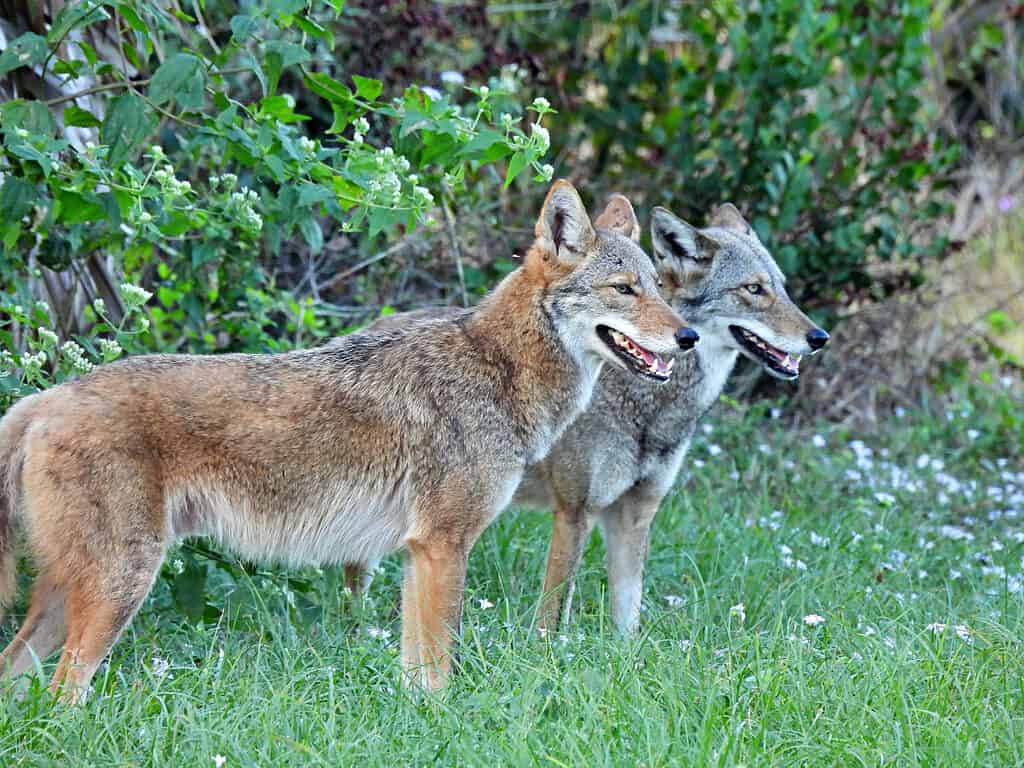
Coyotes like to live near people because they scavenge through trash and sometimes attack pets.
©iStock.com/passion4nature
Red Foxes
A common species in Colorado, red foxes occur throughout the state. They like to inhabit pasturelands, open woodlands, agricultural lands, and riparian areas.

A common species in Colorado, red foxes occur throughout the state.
©Ondrej Prosicky/Shutterstock.com
Beavers
Colorado has a diverse ecosystem, home to many streams, lakes, and rivers. As a result, it has a robust beaver population. These critters are habitat engineers, and their dams slow water currents, reducing erosion, recharging groundwater, and providing ecological benefits and barriers to wildfires.
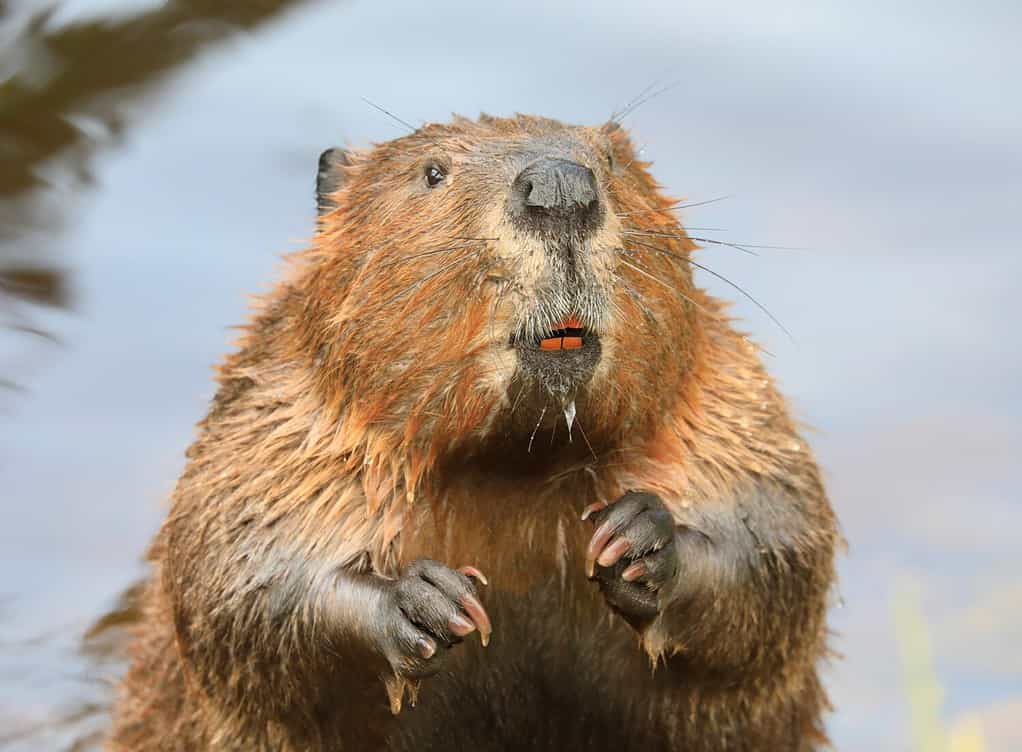
Colorado has a diverse ecosystem, home to many streams, lakes, and rivers. As a result, it has a robust beaver population.
©Vlad G/Shutterstock.com
Rattlesnakes
Colorado has three venomous snakes: the midget faded rattlesnake, the Massasauga rattlesnake, and the prairie rattlesnake.
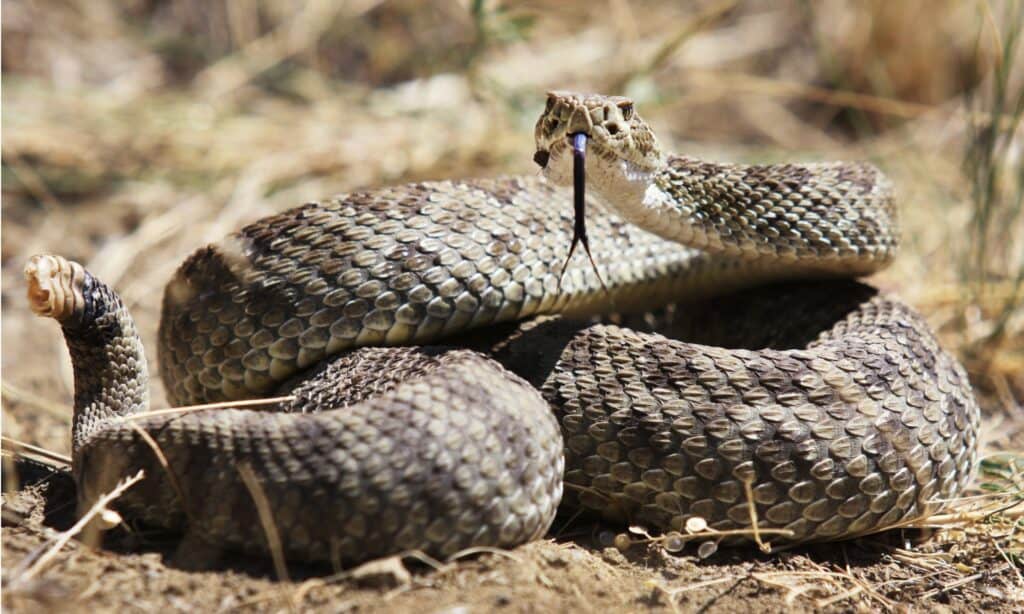
Prairie
rattlesnakes
occur near the largest landfill in Colorado.
©iStock.com/HRossD
Prairie Dogs
There are three species of prairie dogs that inhabit Colorado. They include:
- White-tailed prairie dog – occurs in northwest Colorado
- Black-tailed prairie dog – occurs in eastern plains and Denver metro
- Gunnison prairie dog – occurs in southwest Colorado

The three species of prairie dogs in Colorado are the white-tailed prairie dog, the black-tailed prairie dog, and the Gunnison prairie dog.
©Nick Fox/Shutterstock.com
The photo featured at the top of this post is © Eric Lumsden / CC BY-ND 2.0 – License / Original
Thank you for reading! Have some feedback for us? Contact the AZ Animals editorial team.






